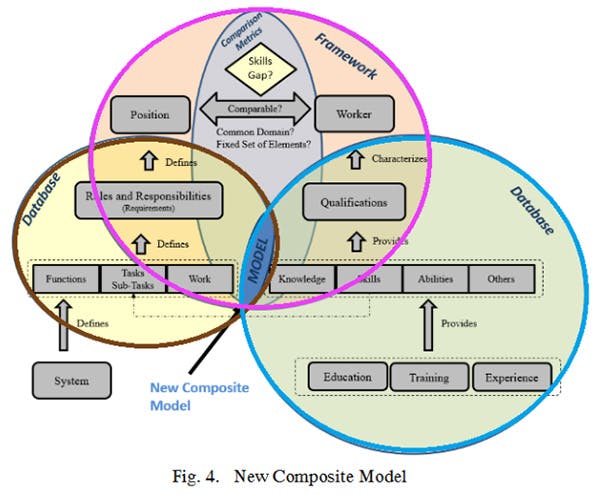Training gap analysis

A training gap or skill gap is any situation in which the worker does not have the knowledge or abilities needed for the job. Despite the best training, gaps will always exist. That is because the work landscape is constantly changing. Governments are continually updating existing regulations and implementing new ones. Equipment changes.

Even something as simple as a new photocopier will create a training gap. Without getting an idea of your team’s current skill levels and implementing the necessary training, they may not be prepared to handle such new equipment. This is why it's important to have a proper training gap analysis in place.
Composite skills gap model
The most important part of your training gap analysis is the ‘anatomy of the job position’. We need to make sure that we have covered everything. This includes all the things that the person will be doing in their work. If we leave any out, it may look like the person does not have a skill gap when, in fact, they do.
This is the core of the matter. For this reason, we need an excellent composite skills gap model. Let’s examine the one created by McKenney and Handley.
Martin J. McKenney and Holly A. Handley, PhD authored an excellent article entitled: Identifying and Quantifying Personnel Skill Gaps. They created a create a new, composite model based on several existing models: the Design Science Research Method (DSRM); the Navy’s Human Capital Object model; the Army’s Job Assessment Software Selection (JASS) program; and the O*NET descriptors. The image below (used with the authors’ permission) shows their model and comes from the article referenced above:

While it seems complicated, we can break it down into more simple components.
Job position/responsibilities (Brown circle)
The items in this section describe the rules and responsibilities of the position. That is, what are the situations which the person will encounter and what needs to be done in each of those situations.

For example, someone in hospitality working the front desk will have one scenario when the reservation is found and the check-in goes smoothly, and another when there is an angry customer with reservation issues.
Employee/worker (Blue circle)
These components relate to the qualifications needed. In other words, what does the person need in order to get the job done? This includes formal education and training + ‘in the field’ knowledge and experience.

Training gap analysis (Pink circle)
Notice that all the aspects of the brown circle create ‘the position’ and all the parts of the blue circle create ‘the worker’. The training gap analysis is the comparison of the two. That is, each time a requirement of a position does not find a suitable match in the knowledge/skill set of a worker.

Importance of a database
If you notice, the word ‘database’ is written in both the brown and blue circles in the New Composite Model figure (Figure 4 above). ‘Database’ refers to the O*Net Resource Center. O*Net stands for Occupational Information Network.
O*Net was developed by the North Carolina Department of Commerce (North Carolina is a state in the U.S.) and funded by the U.S. Department of Labor/Employment and Training Administration (USDOL/ETA). Its purpose is to provide ‘an anatomy of a position’.
As O*Net states: “Every occupation requires a different mix of knowledge, skills, and abilities, and is performed using a variety of activities and tasks.” While you, no doubt, can list these for the jobs in your enterprise, you might miss a few important aspects. The more complete the job position anatomy, the better the skill gap analysis.
The advantage of O*Net is that it synthesizes the data from a broad range of workers in each occupation and is continually updated. This information is stored in the O*NET® Content Model.
Training gap analysis templates
When organizing all the ‘job anatomy’ components, it's important to choose a format that works best for your organization. One popular template is a skills matrix. No matter which template you use, the critical thing is to include every component, every aspect which you have identified using your composite skills model.
Skill-building activities
Once you have identified where the skill gaps are, you can organize the education and training needed. Working with an LMS is extremely helpful. For one, a quality LMS such as EdApp comes with a free, editable Course Library in partnership with leading organizations and certified by your industry experts.

Often, you only have to tweak the content and branding to have a ready-to-use course in minutes. For another, the 80+ LMS authoring templates make it easy to create your own branded content so you can implement skill building activities. Lastly, the LMS performance dashboard lets you easily track your trainees’ progress, including drill-down options for further analytics.
Close gaps in your training with EdApp. Sign up for free today!
Author
Guest Author Lisa Aharon
Lisa Aharon is a guest author at EdApp, offering varied experience as a computer programmer/analyst, technical writer, secretary/bookkeeper, copy editor, creative writer, and English teacher.
